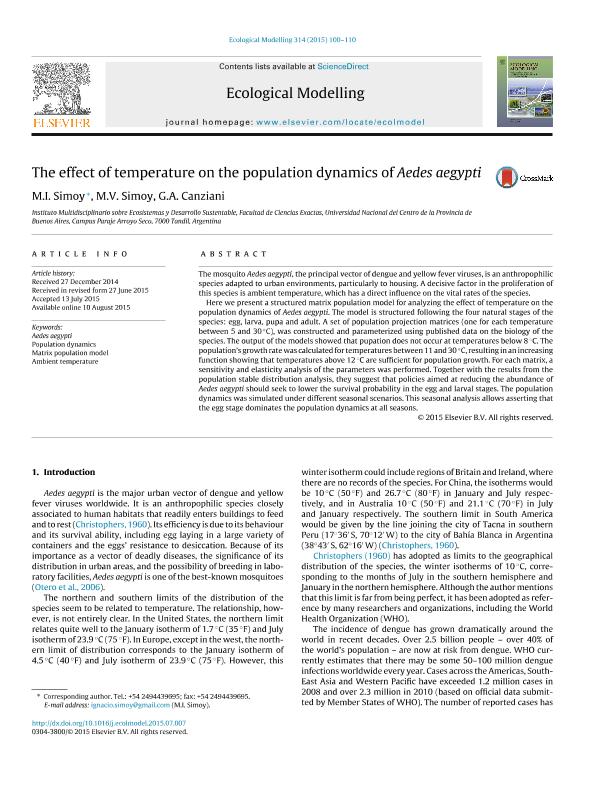Artículo
The effect of temperature on the population dynamics of Aedes aegypti
Fecha de publicación:
10/2015
Editorial:
Elsevier Science
Revista:
Ecological Modelling
ISSN:
0304-3800
Idioma:
Inglés
Tipo de recurso:
Artículo publicado
Clasificación temática:
Resumen
The mosquito Aedes aegypti, the principal vector of dengue and yellow fever viruses, is an anthropophilic species adapted to urban environments, particularly to housing. A decisive factor in the proliferation of this species is ambient temperature, which has a direct influence on the vital rates of the species.Here we present a structured matrix population model for analyzing the effect of temperature on the population dynamics of Aedes aegypti. The model is structured following the four natural stages of the species: egg, larva, pupa and adult. A set of population projection matrices (one for each temperature between 5 and 30. °C), was constructed and parameterized using published data on the biology of the species. The output of the models showed that pupation does not occur at temperatures below 8. °C. The population's growth rate was calculated for temperatures between 11 and 30. °C, resulting in an increasing function showing that temperatures above 12. °C are sufficient for population growth. For each matrix, a sensitivity and elasticity analysis of the parameters was performed. Together with the results from the population stable distribution analysis, they suggest that policies aimed at reducing the abundance of Aedes aegypti should seek to lower the survival probability in the egg and larval stages. The population dynamics was simulated under different seasonal scenarios. This seasonal analysis allows asserting that the egg stage dominates the population dynamics at all seasons.
Archivos asociados
Licencia
Identificadores
Colecciones
Articulos(CCT - TANDIL)
Articulos de CTRO CIENTIFICO TECNOLOGICO CONICET - TANDIL
Articulos de CTRO CIENTIFICO TECNOLOGICO CONICET - TANDIL
Citación
Simoy, Mario Ignacio; Simoy, Maria Veronica; Canziani, Graciela Ana; The effect of temperature on the population dynamics of Aedes aegypti; Elsevier Science; Ecological Modelling; 314; 10-2015; 100-110
Compartir
Altmétricas




